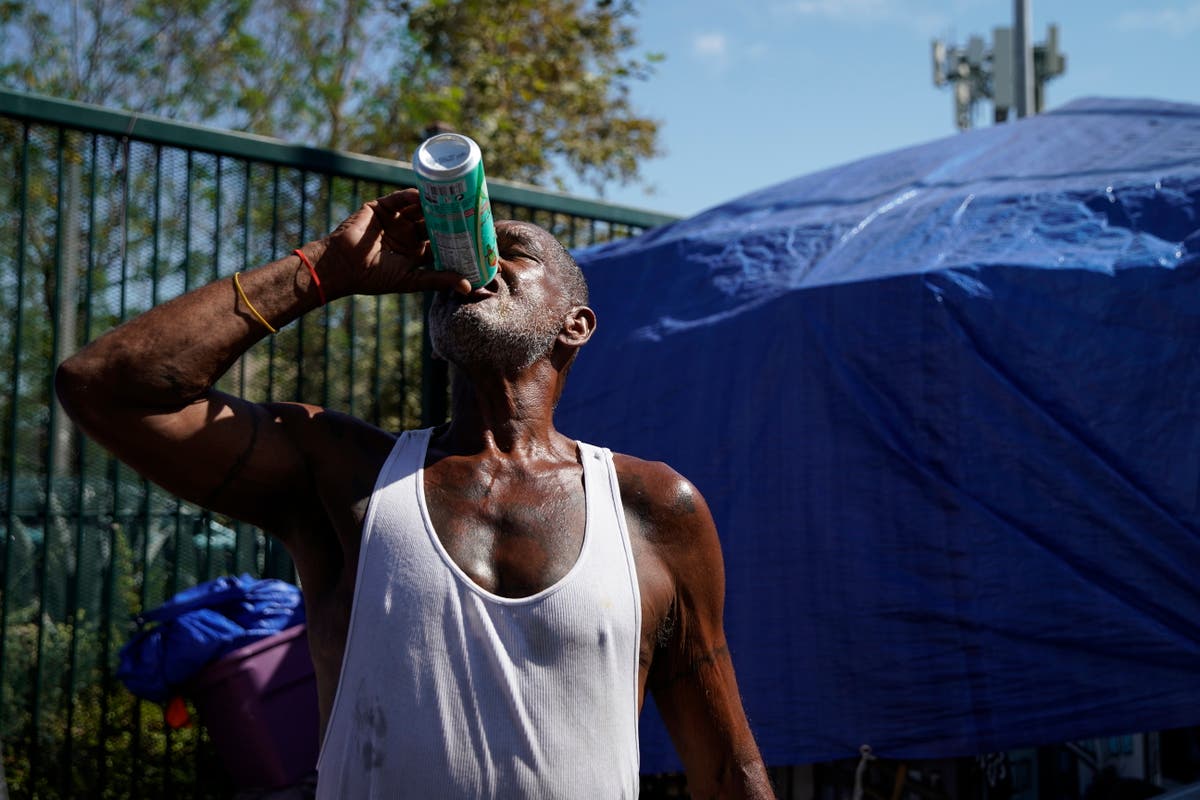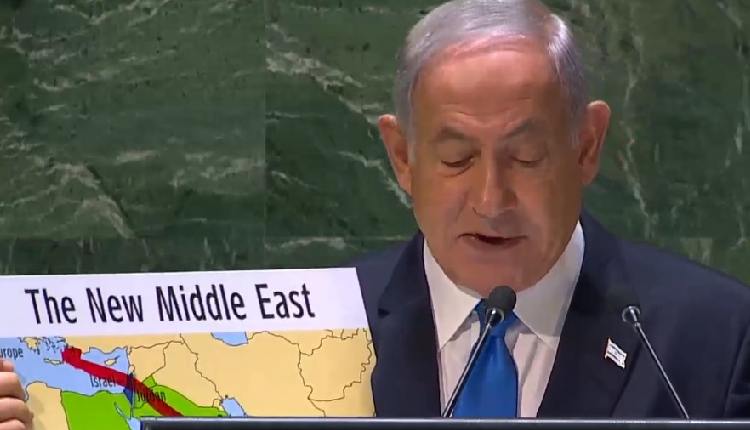
Sign up to the Independent Climate email for the latest advice on saving the planet Get our free Climate email Please enter a valid email address Please enter a valid email address SIGN UP I would like to be emailed about offers, events and updates from The Independent. Read our privacy notice Thanks for signing up to the
Independent Climate email {{ #verifyErrors }}{{ message }}{{ /verifyErrors }}{{ ^verifyErrors }}Something went wrong. Please try again later{{ /verifyErrors }}
The dangerous heatwave in California is set to come to a head this weekend with potentially record-breaking highs.
Death Valley, already one of the hottest places on the planet, reached 124 degrees Fahrenheit (51 degrees Celsius) on Thursday, a daily record for the area.
On Friday, Monday and Tuesday, temperatures in the valley are forecast to reach 125F (51.6C), according to AccuWeather. The hottest temperature ever recorded in September anywhere in the world is 126F (52.2C), set in Mecca, California in 1950 – meaning Death Valley has a shot at breaking the all-time September record sometime this weekend.
While the rest of the state won’t get quite as hot, temperatures are still forecast to be punishingly high.
On Tuesday, temperatures are expected to reach 112F (44C) in Fresno and 110F (43C) in Sacramento. Highs in other parts of the Central Valley are expected to reach between 107F (42C) and 109F (43C).
The National Weather Service (NWS) office in Sacramento has encouraged people to walk their dogs in the morning to keep their feet off the hot ground. When air temperatures reach 102F (39C), they note, asphalt can get as hot as 167F (75C), and concrete can reach 143F (63C).
The Los Angeles area is expected to get its hottest temperatures on Sunday and Monday, with highs in parts of the San Fernando Valley reaching up to 114 (46C) on Sunday. Downtown LA is supposed to reach around 100F (38C) all weekend.
Parts of the Inland Empire will see dangerous heat all weekend and into next week. On Monday and Tuesday, the Coachella Valley is forecast to reach highs around 113F (45C).
Intense heat is expected to reach other parts of the western US, too. Eastern Washington and Oregon, as well as parts of Idaho, are forecast to reach highs around 100F (38C) on Friday. On Saturday, most of eastern Montana will also see highs around 100F.
And temperatures in southern Nevada and western Arizona, typically very hot, will be even more brutal this weekend. On Monday, the mercury is expected to reach 109F (43C) in Phoenix, 110F (43C) in Las Vegas and 112F (44C) in Yuma.
Nearly all of California, in addition to the areas around Phoenix and Las Vegas, are under an “excessive heat warning.” Other parts of the west are under “excessive heat watch” or “heat advisory”.
In total, 54 million people are under some kind of heat alert.
Even in areas where the heat won’t be particularly dangerous, it will get much hotter than usual. High temperatures in downtown San Francisco will only reach about 79F (26C) over the weekend — but that’s higher than the average September high temp in the area of 70F (21C).
Temperatures this high can be extremely dangerous, especially for people who might be especially sensitive to heat like the elderly, young children and those with pre-existing health conditions.
Heat illness can range from heat rash to potentially fatal heat stress, where the body is unable to cool itself down. The National Weather Service has encouraged people to stay hydrated, seek air conditioning and check in on vulnerable people.
Non-profits and shelters across the state are working to keep homeless people safe over the next few days, providing shelter, water and shade.
Heat can be especially dangerous if temperatures don’t cool down much at night and give people a break. Parts of inland California are only expected to drop down to around 80F (27C) or even 90F (32C) at night.
This also holds true for urban areas, which can get hotter than surrounding areas.
“Even after the sun goes down, heat can be a real danger – especially in large cities. Dark pavement and buildings are very effective at absorbing heat,” the NWS office in Los Angeles tweeted.
High temperatures forecast for Labor Day in California and other western states, as a major heatwave sweeps through (NWS/NOAA)
California Governor Gavin Newsom has declared a state of emergency in response to the heat, in part to boost electricity production and reduce energy demands.
The grid operator in the state, California ISO, has warned of potential blackouts as energy demand ramps up from extreme heat, in large part due to air conditioning needs. They’ve asked people to set their thermostats higher and avoid using major appliances or charging electric cars during peak afternoon hours.
“Heat waves may have existed long before climate change, but their duration and intensity have never been more challenging,” the governor’s office tweeted on Thursday.
The heat has also sparked wildfires, as high temperatures meet landscapes primed for burning after the intense drought that has rocked the west for years.
Two wildfires are burning near Los Angeles and San Diego, which have prompted evacuations, destroyed structures and left 11 firefighters with injuries. Some other fires are also burning across California and in Oregon, the Rum Creek Fire has burned nearly 17,000 acres — about 40 per cent the size of Washington, DC.
Parts of Washington, Oregon, Montana, Idaho and northern California are under Red Flag Warnings, meaning a high risk of fires breaking out as a result of high temperatures, dry air and winds.
These kinds of heatwaves could get a lot more common as the climate crisis grows. According to a United Nations climate science panel, heatwaves that used to occur every 10 years will happen every other year if the world reaches 2C of warming about 19th-century temperatures.
Already, the world has warmed about 1.1-1.2C — and is projected to reach 2.7C of warming by 2100, according to the Climate Action Tracker, an independent analysis of global climate policy.







